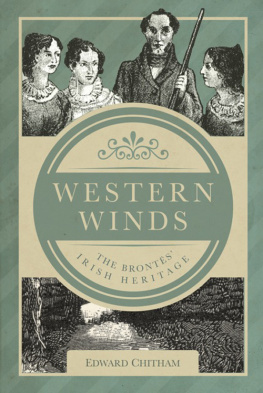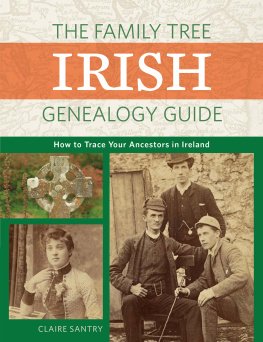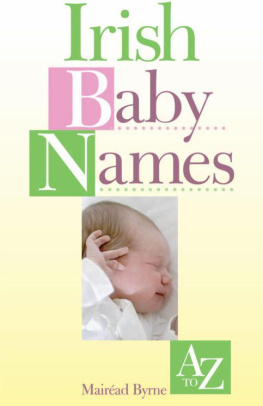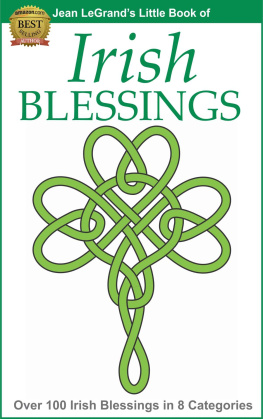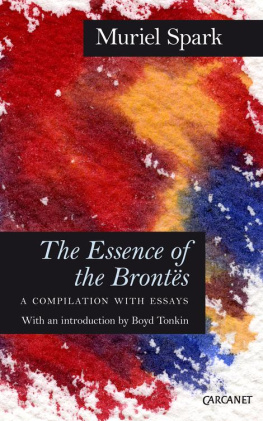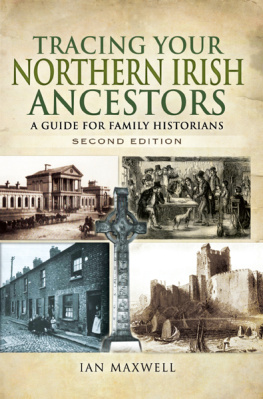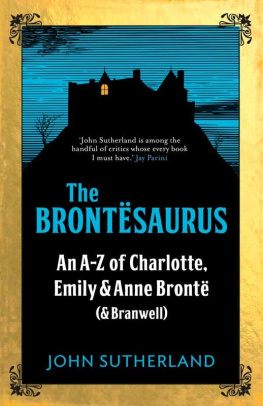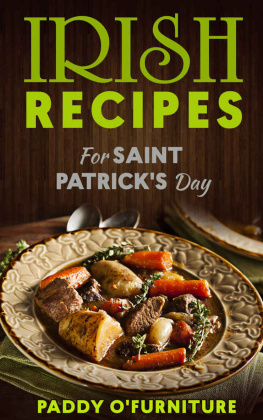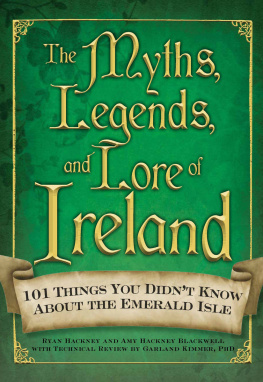

D uring the 1980s Alex Flanigan of Belfast supplied me with a great deal of researched material, some of which I used in The Bronts Irish Background (published 1986), but some of which I was not then able to use. I owe a great debt of gratitude to his most generous contributions. The Bront Society (Irish Section) made it possible for me to visit many of the sites associated with Patrick and his forebears. Thanks are due here especially to Mervyn Patton of Portadown. Helena Haffield enabled me to pay another visit to County Down and reassess Patricks birthplace and Drumballyroney church. I am particularly grateful to Frank Watters of Poyntzpass who left no stone unturned to try to discover the notes made by John McAllister concerning Hugh Pruntys account of his life. Thanks are also due to Bryan Hooks ( Banbridge Chronicle ), Dr William Roulston of the Ulster Historical Foundation, C.E.F. Trench of Slane for material on Ardagh, Henry McMaster of Holywood, County Down, and Amber Adams of Calgary, Alberta, Canada, for general encouragement and help.
A host of earlier writers on Bront issues have provided clues to be followed up. In the internet age, thanks are also due to volunteers and institutions which provide useful background material, including the Public Record Office of Northern Ireland (PRONI), the National Archives of Ireland, Fermanagh Genweb, John Hayes, and Ros Davies of County Down.
Internet contributors often use secondary sources or transcripts, which I have tried to check from primary sources where possible. My other sources are listed in the bibliography.
I cannot close this list without a word of posthumous thanks to Dr William Wright, a native of the Bront homeland in County Down, whose evidence on the family background is priceless, though sometimes overlaid with some romantic exaggeration. Whatever his faults, he rescued this important perspective from total oblivion. Without his account we would know little of this vital story and Bront studies would be much the poorer.
CONTENTS
Part 1 Pruntys in Ireland
Part 2 Pruntys in Yorkshire
T he spelling of Irish names when anglicised took years to be standardised, and even now spelling is not always consistent. The Bront family in England used accents, a dieresis or no mark at all. Patricks surname was written Branty when he arrived in Cambridge. In the 1986 predecessor to this work I used the form Brunty for the family name before Patrick standardised on Bront, but I feel now that Prunty is a more likely form for most of Hughs life. I am following the principal of writing Prunty until Brunty or Bront seem more appropriate; this is confusing, but there seems no rational alternative. The townland in which he was born is often written Emdale, but older maps prefer Imdel, and this is the version I shall use; there are arguments for both. Patricks mother was called Ayles, pronounced as a dissyllable, by her friends. I prefer Irish Eils, partly because this seems to show where Emily got her pseudonym, but also because it links the name with the common name Elizabeth. Patricks sister was named Alice, another approximation. In a partly pre-literate society, sounds matter more than ink marks on paper.
The situation is no better for words in the Irish (Gaeilge) language. I shall use Irish to mean the native language. While on the sometimes fraught subject of terminology, I will mention that Ulster will mean the traditional province, part of which is now in the Republic and part in the United Kingdom. This is because in the eighteenth and nineteenth centuries the name would have been so understood. Words in Irish will be spelt as they appear in documents, which can mean that they are differently spelt on different occasions.
Even anglicised words may sometimes cause trouble: the McAllister family are sometimes McAllister, sometimes McAlister and sometimes McCallister. All I can hope is to be consistent except when quoting.
H as it ever been sufficiently recognised that Charlotte Bront is first and foremost an Irishwoman ? asked Mrs Humphry Ward in 1899, writing a preface to Jane Eyre in the Haworth edition of the Bront works. The answer is certainly, No. However, the reading public are not to blame for this, though Mrs Wards point remains true for many critics and biographers. Even they are not to be held totally responsible, since both Charlotte and her father, Patrick, did their very best to ensure that this would be the case. The purpose of this book and its 1986 predecessor is to redress the balance somewhat, though this may appear a little disrespectful to Charlotte and her father. Not so, however, to Emily Bront, whose major work, Wuthering Heights, and her poems mark her out as an extremely unusual spirit, who observed Yorkshire without becoming integrated there. When one of her Irish uncles visited Haworth, the youngest sister, Anne, said she would like to come home with him to Ireland.
Discovering the Irish background is not easy. As well as penetrating the reserve of Charlotte and Patrick, we shall need to rely for a consistent narrative on an author who sometimes romanticised and didnt quote precisely all his sources: Dr William Wright. Nevertheless, we shall find him most unwarrantably attacked for fleshing out his account imaginatively. He is a priceless witness, despite flaws.
At the end of the nineteenth century there was, unfortunately, a determined effort to keep the Bronts as Yorkshire regional novelists, as indeed in part they were; but not wholly. Some of their ideas and attitudes, and perhaps even storylines, can be traced to eighteenth- and nineteenth-century Ireland.
The question that will be explored in this book is what exactly was the Bront heritage from Ireland? Can we know anything for certain about the sisters grandparents? Do we have information about their uncles and aunts? What kind of milieu was that in which Patrick grew up in the County Down of the late eighteenth century? Was Patricks father really a peasant?
How much did the Bront sisters and Branwell know about their family past? How did Patrick come to be a clergyman in the Church of England? Is it possible to probe even further back and discover an ancestry that Patrick himself in his terse remarks to the biographer Mrs Gaskell hints at? It will be suggested that Patrick was an extraordinary, forceful person (he honourably called himself an eccentrick), who inherited his character from both parents, but in particular from his own father, Hugh. His power was in turn inherited by his daughters and his eccentricity by at least one of them. Though of course they also inherited characteristics from their Cornish mother, the basis of their fire and single-mindedness was transmitted in part perhaps even genetically from the paternal line. So may have been the artistic and verbal versatility, but mercurial temperament, of brother Branwell.
This exploration, then, is only partly literary. By trying to understand the social as well as the cultural background of the Irish Bronts, we may be able to come closer to the influences which, though living in Yorkshire, the younger generation felt intensely. We can see them in somewhat the same light as to-days immigrants from the Asian sub-continent, torn between the assumptions of their parental heritage and the world they now live in. Patrick Bront strove to be English, but never rid himself of an Irishness which was palpable; this is perhaps one reason why he didnt fulfil his full potential. He wanted to be active in politics, but to do so meant rejecting those parts of his own background. His energy demanded outlets, but his status as perpetual curate militated against his ambition. His hopes were only fulfilled by his daughters. This book will try to explain why some of these things were so.
Next page
